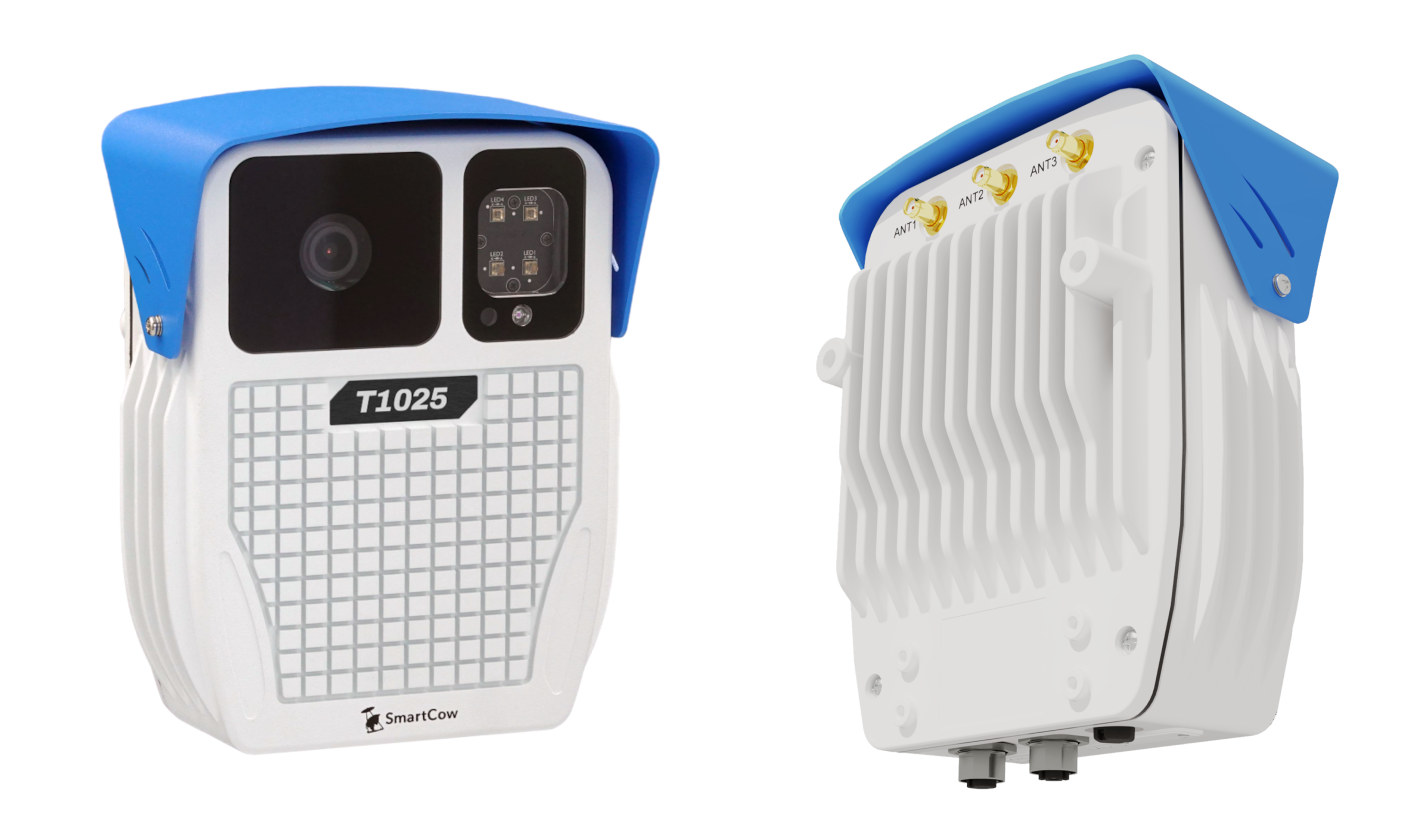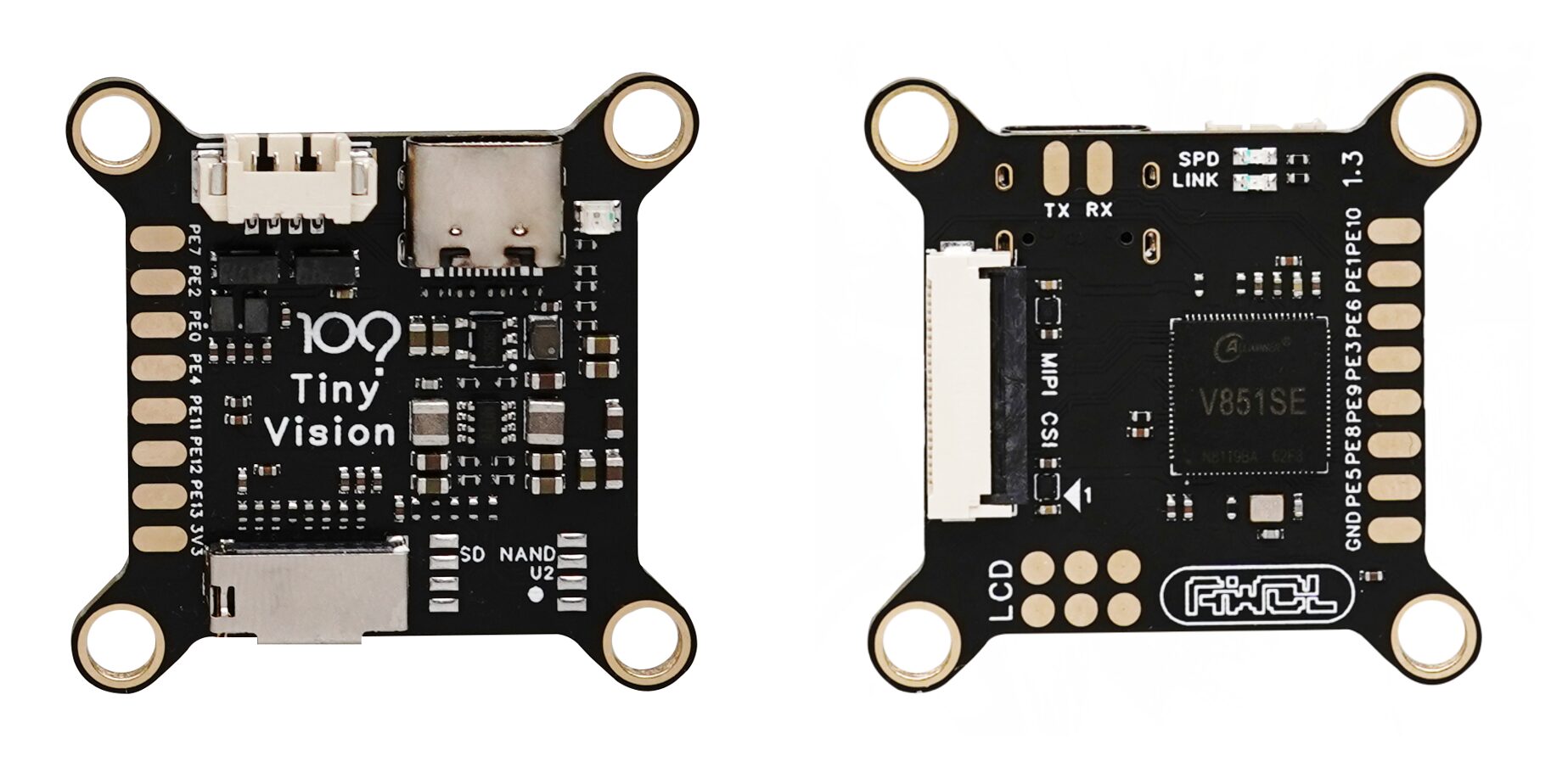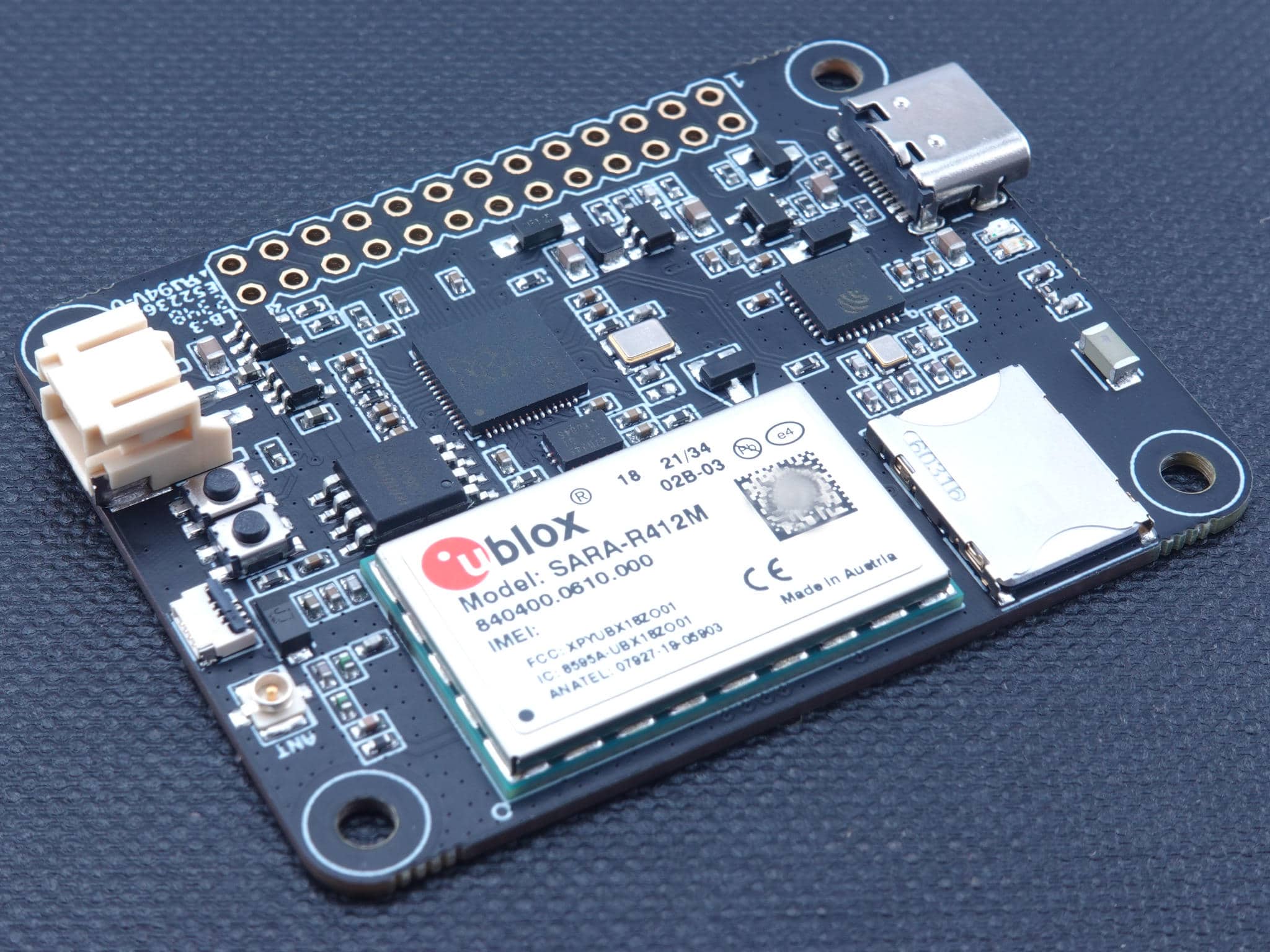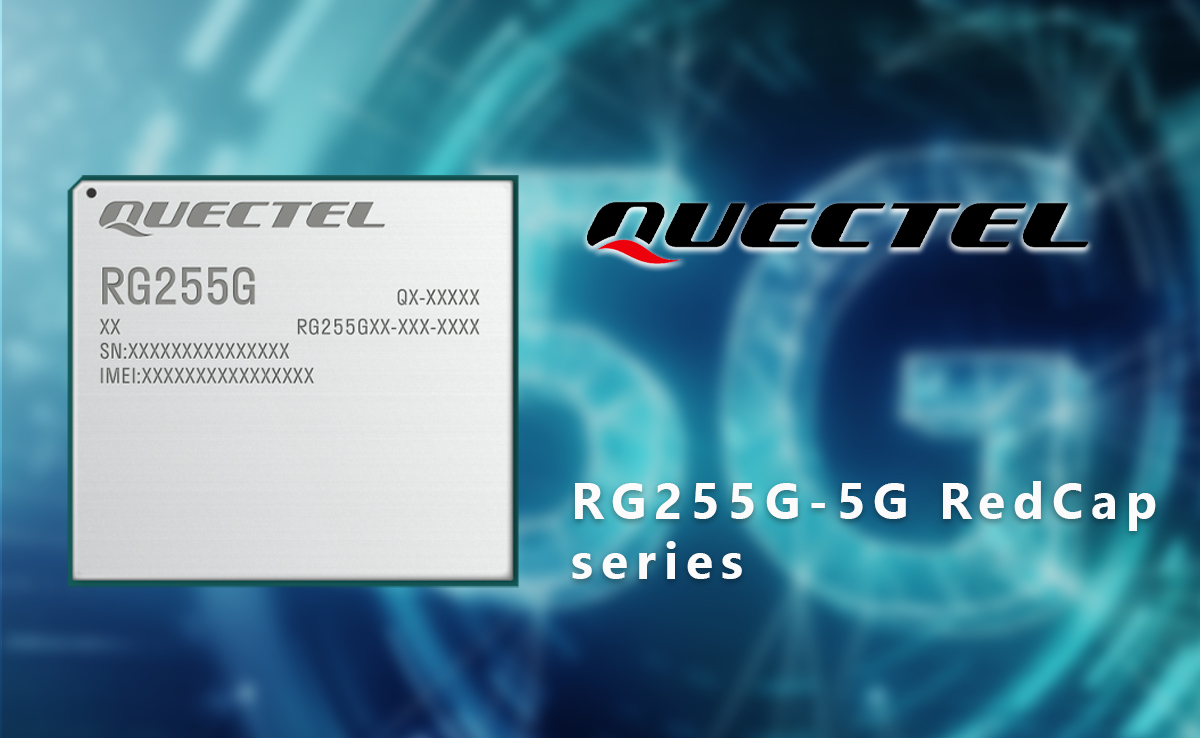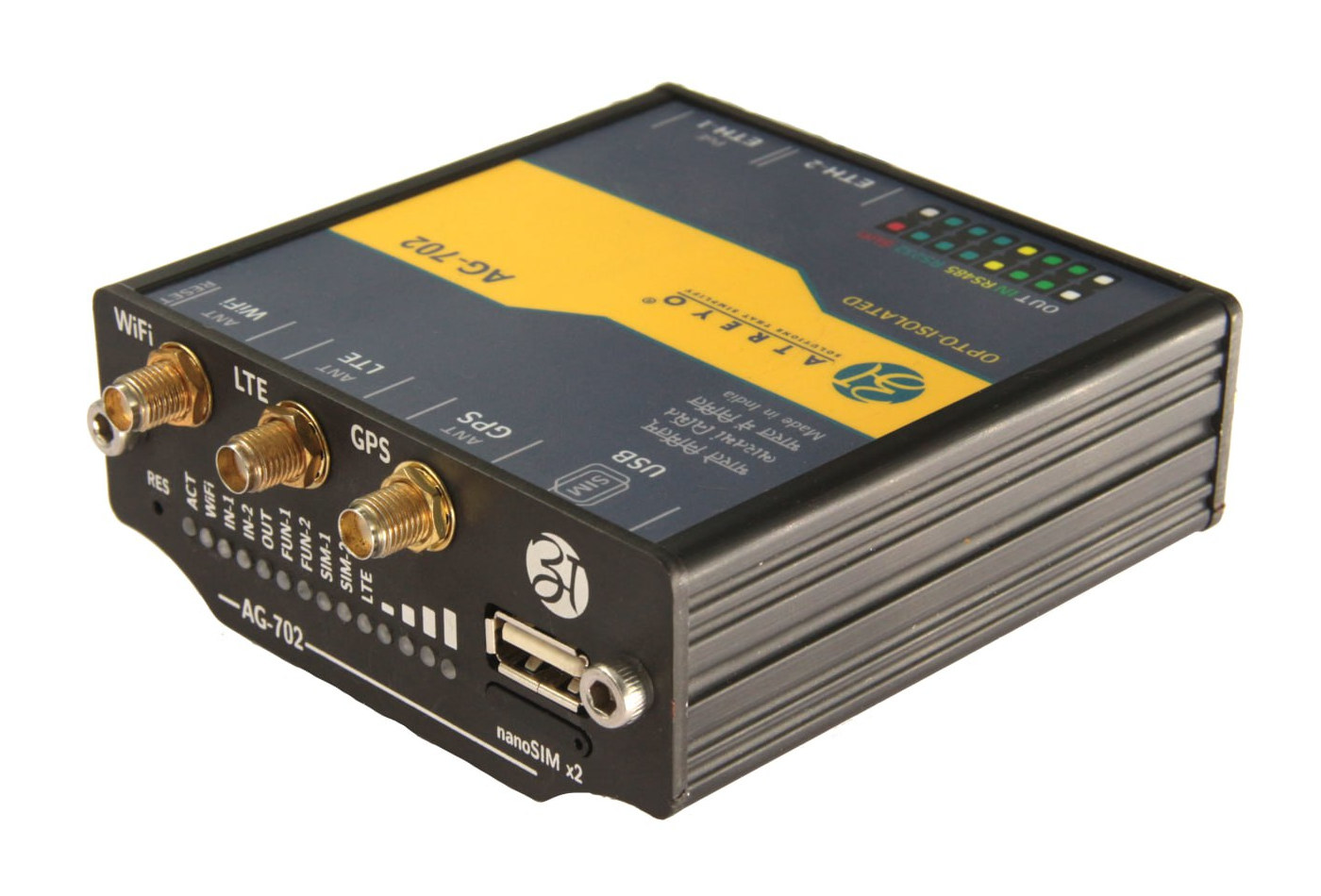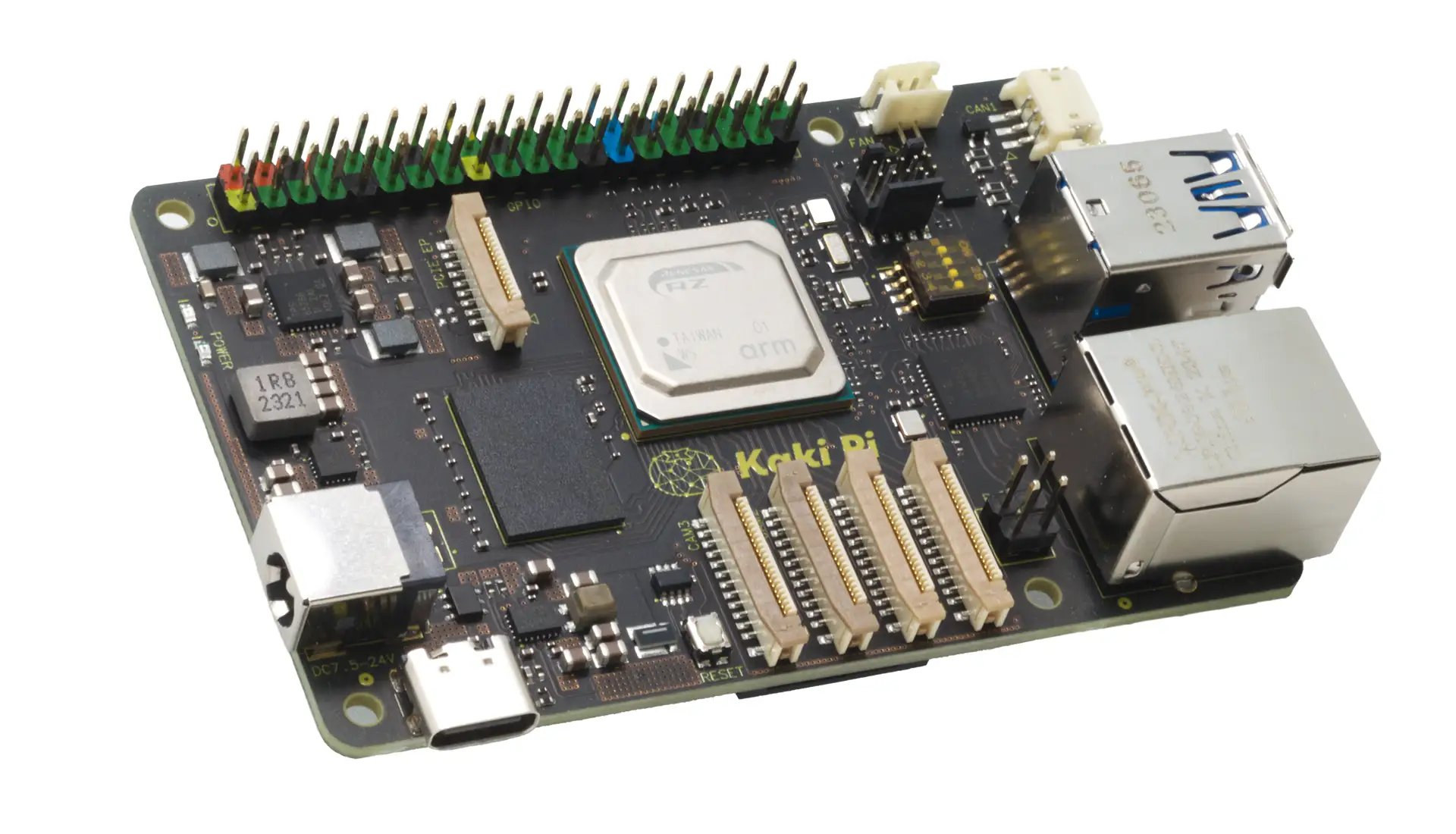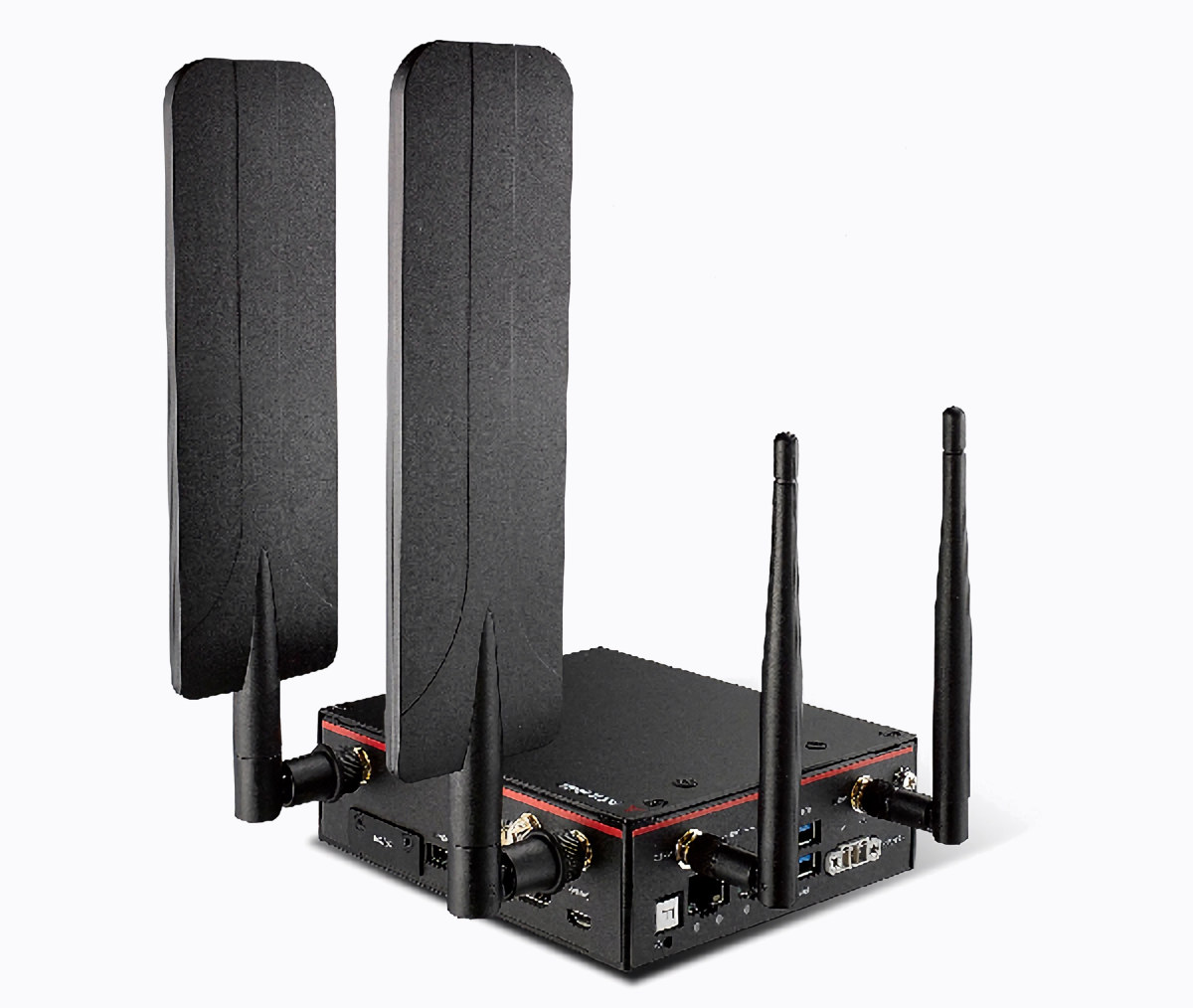SmartCow’s SmartCam T1025 is a powerful AI camera based on the NVIDIA Jetson Orin Nano 8GB system-on-module with 40 TOPS of AI performance. The camera features M12 connectors for gigabit Ethernet, power, and serial interface, and has been certified with an IP65 ingress protection rating for outdoor operation. The camera also comes with 256GB NVMe SSD for the OS (Jetpack 6.0) and data storage and supports 4G LTE and GPS connectivity through an M.2 module. The company also introduced the SmartCam T1023 model compatible with NVIDIA Jetson Nano and Jetson TX2 NX for applications that do not require as much processing power and/or memory as provided by the Jetson Orin Nano AI camera. SmartCam T1025 specifications: System-on-module – NVIDIA Jetson Orin Nano 8GB CPU – 6-core Arm Cortex-A78AE v8.2 64-bit CPU @ 1.5 GHz with 1.5 MB L2 + 4 MB L3 GPU – 1024-core NVIDIA Ampere GPU @ 625 […]
TinyVision is a compact Allwinner V851S/V851S3-powered Linux board for vision-based applications
Unrelated to tinyVision.ai, the TinyVision development board is a computer vision board from Chinese developer YuzukiTsuru powered by either the Allwinner V851S or the V851S3 and is billed as an “ultimate all-in-one solution for Linux motherboards, IPCs, servers, routers, and more.” It packs features such as a Cortex-A7 core running at 1200MHz, a 2-channel MIPI CSI input, and an independent image signal processor (ISP) capable of a maximum resolution of 2560 x 1440 in a compact form factor. TinyVision specifications: Processor – Allwinner V851SE / V851s3 with Cortex-A7 core @ 1200MHz and RISC-V E907GC core @ 600MHz NPU: 0.5TOPS (tera operations per second) @ INT8 precision Memory – 64MB DDR2 (V851se), 128MB DDR3L (V851s3) Storage – MicroSD card slot (supports UHS-SDR104), onboard SD NAND via SPI Display – 2-lane MIPI DSI (1280 x 720 @ 60fps), RGB LCD (320 x 240 @ 60fps) Video Input ISP with a maximum resolution […]
The RP2040 Connectivity Board — An IoT solution combining LTE, Wi-Fi, and BLE into a single platform
iLABs (Invector Labs), a European embedded equipment manufacturer, has released a new device, the RP2040 Connectivity Board, an IoT development board that is based on Raspberry Pi’s signature microcontroller IC, the RP2040. The RP2040 Connectivity Board features key IoT connectivity options such as LTE, Wi-Fi, and BLE (Bluetooth Low Energy). It is compatible with both Arduino and PlatformIO and is designed for professional and hobbyist users with wide-ranging connectivity needs. The SARA-R412M series module from u-blox handles cellular communication (LTE) and can be configured to enable multi-regional coverage in both GSM and LTE-M/NB-IoT radio transmissions. It features a unique and immutable root of trust and supports IoT security as a service. The RP2040 Connectivity Board also includes an Espressif ESP32-C3FN4 chip for Wi-Fi/BLE communication based on a RISC-V microcontroller core and implementing a Wi-Fi subsystem that complies with the IEEE 802.11b/g/n standard and supports various operating modes. The Bluetooth Low […]
Quectel RG255G – A MediaTek-Based 5G RedCap IoT Module Designed for Industrial & Automotive Applications
The Quectel RG255G IoT Module is a Sub-6GHz LGA module utilizing 3GPP Rel-17 RedCap (Reduced Capability) technology. The module is designed for medium-speed, large-capacity applications with features like URLLC/network slicing, and multi-constellation GNSS support, while also ensuring compatibility with LTE Cat 4 and 5G Sub-6 SA mode. With a peak data rate of 220Mbps DL/121Mbps UL and interfaces like USB 2.0 and PCIe 1.0, this device is ideal for smart grids, the internet of vehicles, and industrial automation. Quectel RG255G IoT Module Specification: Module Type – 5G Redcap Sub-6GHz LGA module Technology Used – Utilizes 3GPP Rel-17 RedCap (Reduced Capability) technology Data Rates – Maximum data rates of 220Mbps Downlink (DL) and 121Mbps Uplink (UL) 5G/4G Coverage – Worldwide coverage support with RG255G-NA and RG255G-EU 5G Capabilities – Includes 5G SA mode with URLLC/slicing features GNSS Receiver – Multi-constellation GNSS support for applications requiring accurate positioning Optional Features – DFOTA, […]
Golioth expands its free tier for developers with unlimited IoT devices, OTA updates, 1GB bandwidth
When we first wrote about the Golioth IoT development platform with ESP32 and nRF9160 devices support in 2022, we noted they offered a free Dev Tier account for up to 50 devices, 10 MB of LightDB data with a 7-day retention policy, and other limitations. The company has now decided to remove many of the limitations from the free developer tier without any limit to the number of IoT devices and also added other benefits: Unlimited Device Connections: Empowering developers to scale projects without constraints. Over-the-air (OTA) Device Firmware Updates (DFU) with 1GB monthly bandwidth 1,000,000 Monthly Log Messages up to 200MB Free data retention Time series – 30 days Logs: 14 days The main limitations compared to paid plans are that only one project can be created and a single seat (single loading) is available, so it’s not possible to have a team of users with different permissions like […]
Industrial OpenWrt gateway features MediaTek MT7628 SoC, WiFi, LTE, and GNSS connectivity
Atreyo AG-702 is an industrial OpenWrt gateway based on the MT7628 processor with dual Ethernet and WiFi connectivity as well as a built-in LTE and GNSS modem supporting two SIM cards. The gateway is equipped with isolated RS485 and RS232 interfaces, two digital isolated inputs, one relay output, and a USB host port that can be used to connect a flash drive or USB converters to various other interfaces. It is housed in an anodized aluminum enclosure and supports a wide 14-60V DC input range suitable for industrial settings. Atreyo AG-702 specifications: SoC – MediaTek MT7628 MIPS processor at 580MHz System Memory – 256MB Storage – 32MB eMMC flash + 512MB NAND flash with ExtRoot support (overlay) Networking 100Mbps Ethernet WAN port 100Mbps Ethernet LAN port LTE/GPRS with dual SIM, 1x external antenna 2.4 GHz WiFi with 1x external antenna GNSS with active antenna support USB – 1x USB 2.0 […]
Kaki Pi is a Raspberry Pi-inspired Renesas RZ/V2H AI SBC with four camera connectors, a PCIe 3.0 interface
Japanese company Yuridenki-Shokai Co. Ltd will soon launch the Kaki Pi single board computer [update Aug 2024: now called Kakip] based on the just-announced Renesas RZ/V2H Arm microprocessor with a powerful 80 TOPS AI accelerator, with Raspberry Pi-inspired form factor and features such as the 40-pin GPIO header, the same PCIe 3.0 connector as found in the Raspberry Pi 5, and four 22-pin MIPI CSI connectors that look to be compatible with the Raspberry Pi cameras. The board also comes with up to 8GB LPDDR4, a microSD card for the OS, a 22-pin MIPI DSI connector for a display, a gigabit Ethernet port, two USB 3.0 ports, two CAN Bus connectors, and other interfaces that make it suitable for robotics applications such as Autonomous Mobile Robots (AMR) and HSR (Human Support Robots) as well as IoT projects. Kaki Pi specifications: SoC – Renesas RZ/V2H CPU/MCU cores Quad-core Arm Cortex-A55 processor […]
ADLINK MXA-200 5G IIoT gateway ships with Debian or Yocto Linux
ADLINK MXA-200 is an NXP i.MX8M Plus-based 5G IIoT gateway running Debian or a Yocto-based Linux distribution with two RS-232/422/485 isolated serial ports, two gigabit Ethernet ports, two USB 3.0 port, and an operating temperature range of -20 to 70°C. The fanless gateway also features two M.2 slots for integrating Wi-Fi and/or 4G LTE or 5G modules, and ADLINK expected the MXA-200 to find its way into renewable energy applications, EV chargers, smart city and smart factory applications that require big data collection, cloud-based applications, and video related monitoring solutions. ADLINK MXA-200 specifications: SoC – NXP i.MX8M Plus CPU – Quad-core Arm Cortex-A53 processor @ 1.6/1.8GHz MCU – Arm Cortex-M7 real-time core @ 400 MHz GPU – Vivante GC520L 2D GPU, Vivante GC7000UL 3D GPU VPU – 1080p60 hardware decoder (HEVC, H.264, VP9, and VP8) and encode (H.265/H.264) AI accelerator – 2.3 TOPS NPU System Memory – 2GB or 4GB […]


